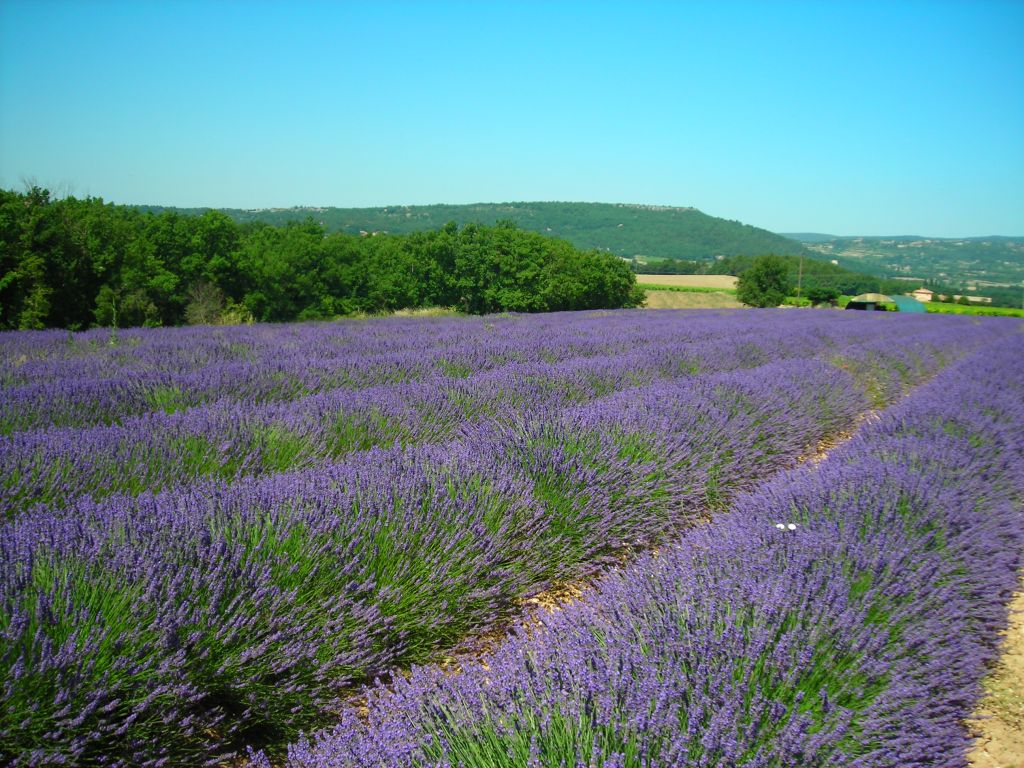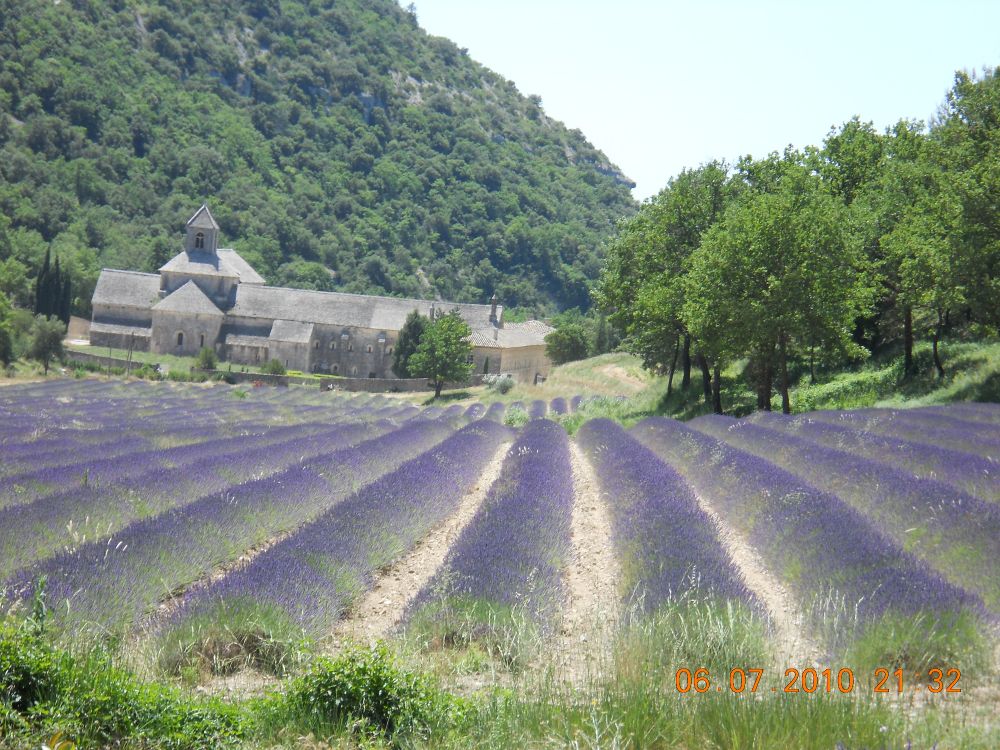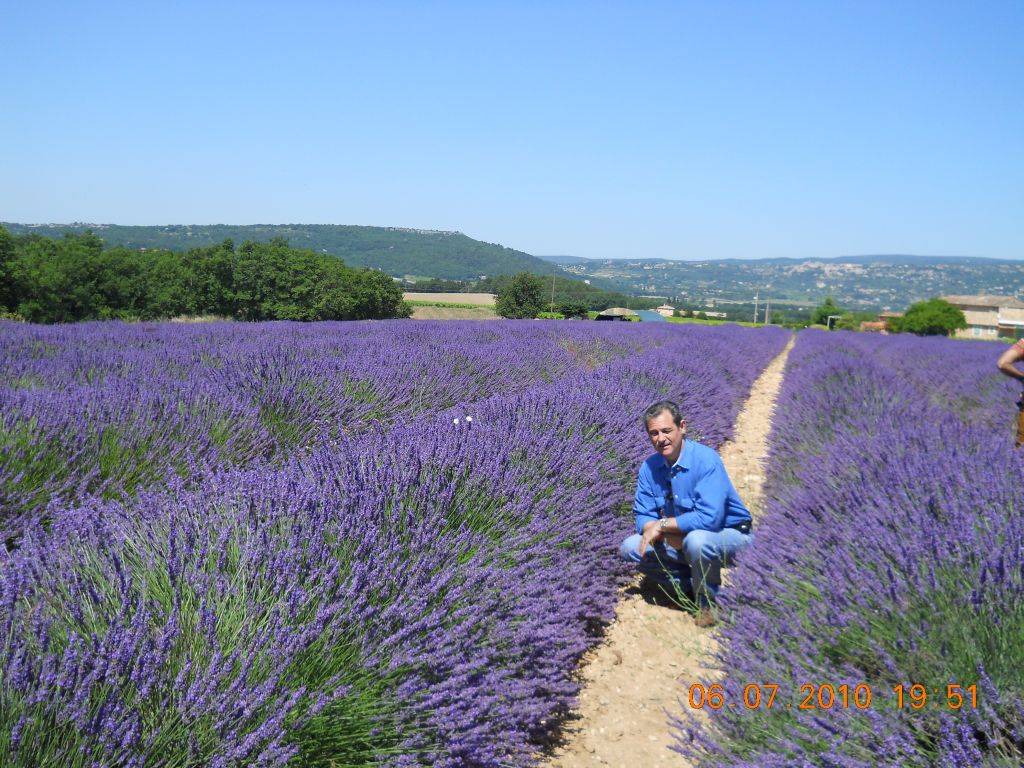Lavender
Fields
Did you know there were three
different types of lavender? ...I certainly did not. Apparently
there is

Spike Lavender grows in scrub land
between 0 et 600 metres of altitue. It is a large plant with several
branchings, each stalk bears many, small flowers. It reproduces itself
by seeding. Little used in France because its fragrance is too strong
(too camphorated), it does serve in Spain and Portugal as a thinner for
oil paints and on porcelain.
Hybrid Lavender grows between 0 and 800 metres altitude anywhere
in the world. It is a large plant, has 2 branchings and forms a highly
developed cluster in the form of a ball. It is a hybrid, which means a
cross between fine lavender and spike lavender. Because it is sterile,
Man propagates it with cuttings. It was brought into cultivation
starting in 1950, and since it has been confused with fine lavender.
That is wrong because it has a stronger fragrance, much less subtle
than the fine lavender, and it can not used for its medicinal
properties. Its use remains industrial, for scenting house cleaning
products and detergents. The flower is used for making the little
sachets of lavender.
It takes about 40 kg of flowers to obtain 1 litre of its essential oil
(a much more interesting yield than from the fine lavender!).




Fine Lavender
which grows on the dry Provençal mountains above 800 metres
altitude. It is a small plant with only one flower on each stem. It
reproduces itself by seeding. Used since the beginning of time for it
medicinal properties, it was the "blue gold" of the region when it was
sought after by the largest perfume makers for its very delicate
fragrance, hence the name, used by producers, of "fine lavender". It
takes approximately 130 kg of flowers to obtain, by distillation, 1
litre of essential oil. In a good year, one hectare of plants could
produce up to 25 litres of essential oil.




